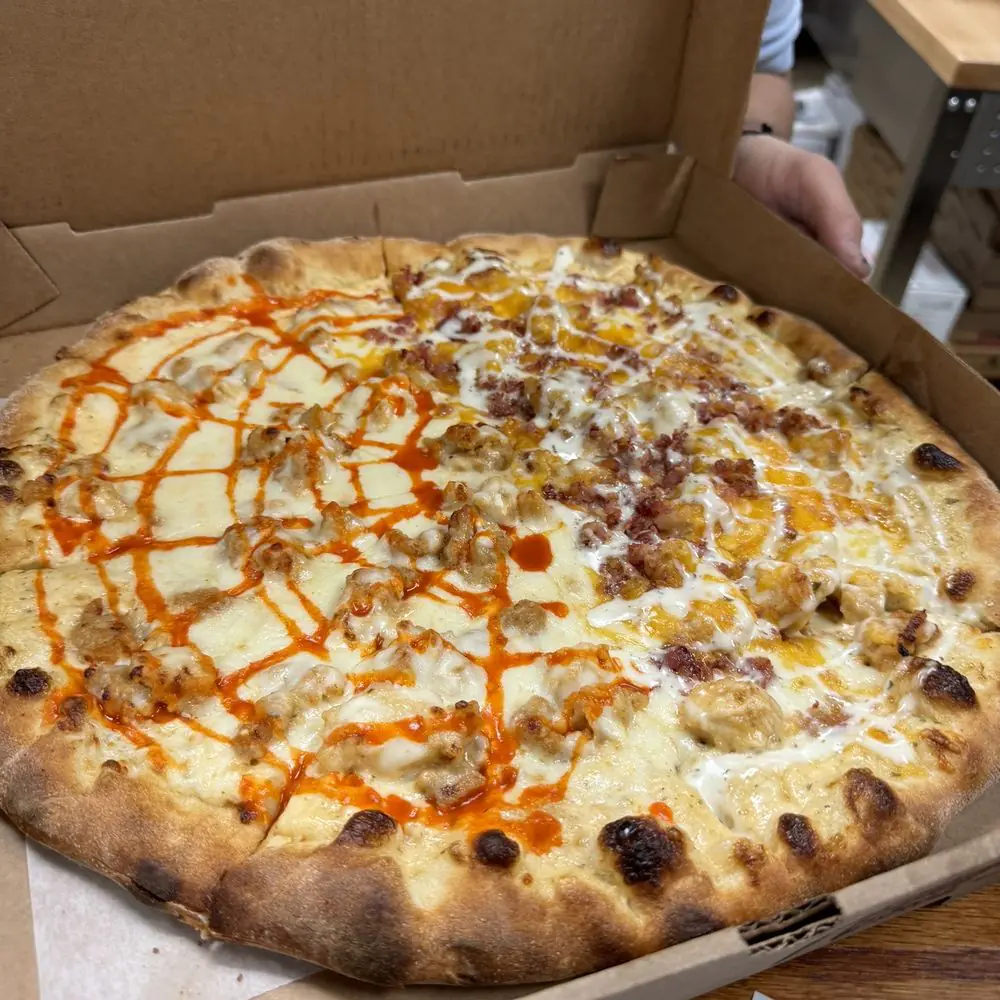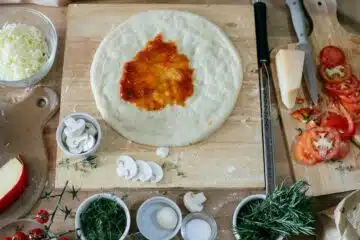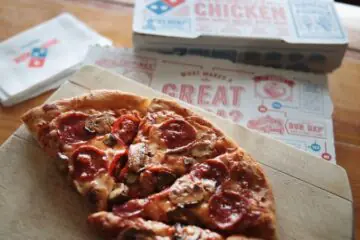Eating pizza cooked directly on cardboard is not recommended. Cardboard can emit chemicals at high temperatures.
Enjoying a freshly baked pizza is one of life’s simple pleasures, but preparing it safely is crucial to your health. Cardboard, often used as a base for frozen pizzas, poses risks when exposed to the heat of an oven. The potential for chemicals to leach into the food increases with the cardboard’s exposure to high temperatures.
For food enthusiasts and health-conscious individuals alike, understanding the hazards associated with improper cooking surfaces is a must. Ensuring your pizza is cooked on a proper baking tray or stone not only enhances flavor but also maintains a healthy eating practice. So before sliding your next meal into the oven, consider the material beneath it; your body will thank you. This essential tip is not only about taste and culinary success but also about prioritizing well-being with every bite.
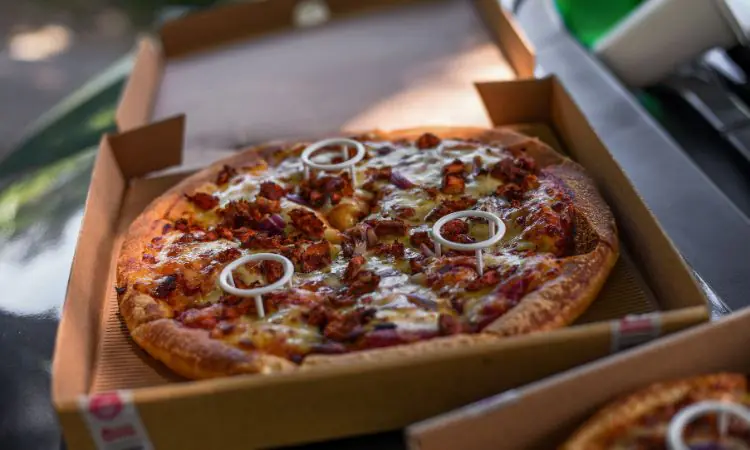
Health Hazards Of Cardboard-cooked Pizza
Imagine cozy movie nights with pizza. It’s common to heat pizza on cardboard for convenience.
But this could be dangerous.
Pizza cooked directly on cardboard poses health risks. Let’s dig deeper into these hazards.
Toxic Chemicals Released
Cardboard often contains chemicals and inks. At high temperatures,
these can release toxic fumes. These fumes might contaminate your pizza.
- Bisphenol A (BPA) can leach into your food.
- Dyes and adhesives might emit dangerous compounds.
- Formaldehyde, present in some cardboard, is a known carcinogen.
Risk Of Ingesting Paper Fibers
Cardboard fibers can be mixed with your cheesy slices.
These fibers are not meant for consumption.
Eating them could irritate your throat and digestive system.
Small, sharp fibers can even create micro-cuts along your digestive tract.
Recycled vs. Virgin Cardboard
| Recycled Cardboard | Virgin Cardboard |
|---|---|
| Higher chemical content | Lower chemical risks |
| More adhesives and inks | Less harmful substances |
Understanding Cardboard Composition
Eating pizza is a pleasure that may come with questions about safety, especially when it involves unconventional practices like cooking on cardboard. To discern whether that’s safe, one must delve into what cardboard is made of. Let’s dismantle some myths and unpack the facts about cardboard materials and chemical treatments.
Materials Used In Cardboard
Knowing what goes into making cardboard is crucial. Cardboard is essentially a paper product, typically consisting of cellulose fibers. These fibers are derived from wood and recycled paper products, forming a sturdy, yet lightweight structure.
- Corrugated Fiberboard: This is the brown, wavy layer often seen in boxes.
- Paperboard: This is a single layer of thick paper and is used for cereal boxes and other packaging.
- Recycled Materials: Many cardboard products contain a percentage of recycled content.
Chemical Treatments Applied
Cardboard also undergoes various chemical treatments during manufacturing. These treatments enhance durability, provide resistance against moisture, and prevent infestation by insects. Some common chemicals include:
| Chemical | Purpose | Common Use |
|---|---|---|
| Alkyl ketene dimer (AKD) | Makes cardboard water-resistant | Used in coating and sizing |
| Sodium silicate | Strengthens and bonds fibers | Found in adhesives |
| Boric acid and borax | Preserve and bug-proof | Integrated during pulping |
It is essential to recognize that these chemicals, while useful for preservation and strength, may carry risks when exposed to high temperatures, such as those found in an oven. Understanding these chemicals helps us gauge the safety of cooking pizza directly on cardboard.
Safe Cooking Practices For Pizza
When making pizza, safety is as crucial as the ingredients. The right cooking surface can determine not just taste, but also safety. Many ask, “Can pizza cook on cardboard?” Let’s explore safe cooking practices to ensure deliciously safe pizza every time.
Recommended Surfaces And Materials
Pizza stones, steel baking sheets, and oven racks are the top choices for baking pizza. Each has its benefits:
- Pizza stones help achieve an evenly cooked, crispy crust.
- Steel baking sheets conduct heat well, leading to a robust base.
- Oven racks allow the air to circulate, giving a nice texture to the crust.
Preheat these surfaces before adding the pizza to prevent sticking and achieve a crispy crust.
Potential Risks Of Alternative Methods
Cooking pizza on cardboard may seem convenient, but it’s not safe. Cardboard can catch fire at high temperatures. Below are the risks associated with improper cooking methods:
- Fire hazard: Cardboard ignites at around 400°F (204°C).
- Toxic chemicals: Cardboard can release chemicals at high heat.
- Uneven cooking: Cardboard doesn’t conduct heat, leading to a soggy pizza base.
It’s important to stick with recommended surfaces designed for high heat. They ensure your pizza is not just tasty but safe to eat.
The Science Of Heat Transfer To Food
Let’s dive into The Science of Heat Transfer to Food. When you cook a pizza, heat moves to it from the oven. Understanding how heat moves can tell us if cooking on cardboard is a good idea. It’s all about how heat moves to the pizza to cook it just right.
How Cardboard Affects Cooking Temperature
Cardboard changes how heat reaches your pizza. It acts like a shield, slowing down the heat. The oven’s hot air cooks the top of your pizza fast. But the bottom cooks slowly because of the cardboard.
- Oven air heats the pizza top – It gets crispy and cooked.
- Cardboard blocks bottom heat – It can make the bottom doughy.
Influence On Pizza Quality And Safety
Pizza should taste good and be safe to eat. Cardboard can change both.
| Aspect | Effect |
|---|---|
| Quality | The cardboard might make the bottom less crispy. |
| Safety | At high temperatures, chemicals in the cardboard could move to the pizza. |
Ingredients in cardboard are not good for you. Cooking pizza on it could make these bad things get into your food. A crispy and safe pizza is better without the cardboard.
Guidelines From Health Agencies
Welcome to an important discussion on safe food practices, specifically focusing on the conventional comfort food many love—pizza. Following the guidelines from health agencies is vital to ensure safety while indulging in this delicious dish.
Food Safety Standards
Health agencies set food safety standards for a reason—to keep people safe. These standards specify the safest methods for cooking and storing foods, like pizza, to prevent foodborne illnesses.
- Always cook food thoroughly according to recommended temperatures.
- Store ingredients at proper temperatures before use.
- Avoid cross-contamination by using clean surfaces and utensils.
Official Advice On Cooking With Cardboard
In terms of cooking pizza on cardboard, official advice is straightforward: it’s not a recommended practice. The concern is the risk of chemicals and the possibility of fire.
| Agency | Advice |
|---|---|
| Food and Drug Administration (FDA) | Cardboard is not approved for direct food contact at high temperatures. |
| United States Department of Agriculture (USDA) | Do not place cardboard in the oven; it is a fire hazard. |
| United Kingdom’s Food Standards Agency (FSA) | Avoid using cardboard in ovens due to the risk of tainting food with chemicals or igniting it. |
Always remove pizza from cardboard packaging before cooking. If instructions are unclear, reach out to the manufacturer or refer to trusted food safety resources for guidance.
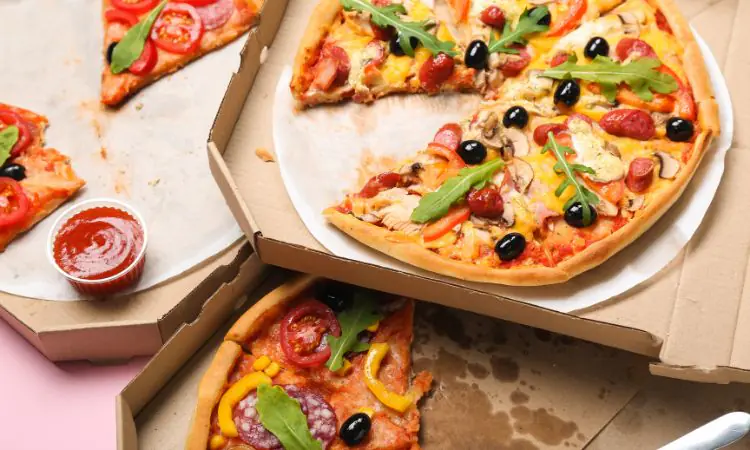
Alternative Ways To Enjoy Pizza Safely
We all love a good pizza, but safety in the kitchen is key. Baking pizza on cardboard may seem convenient, but it’s not the safest choice. High temperatures can release chemicals from the cardboard, and it’s a fire hazard. Fear not, there are better ways to enjoy your pizza safely. Here’s how:
Using Parchment Paper Or Baking Stones
Parchment paper and baking stones present a safer and tastier way to cook pizza.
- Parchment Paper: Non-stick and heat resistant. It simplifies clean-up. Place your pizza on parchment paper before cooking.
- Baking Stones: These mimic brick oven quality. They soak up moisture from the dough. This ensures a crispy crust. Heat the stone in the oven before adding your pizza.
Proper Pizza Oven Techniques
Mastering the oven is crucial for the perfect homemade pizza.
- Preheat your oven with the baking stone inside.
- Use a pizza peel to transfer your pizza. Ensure safe handling.
- Monitor your pizza closely as it cooks. Each oven is unique.
- Invest in an oven thermometer to maintain the right temperature.
A properly cooked pizza is not just about the taste. It’s about safety, too. Forget the cardboard and reach for the right tools for a pizza that’s both delicious and safely prepared.

Frequently Asked Questions Of Is It Safe To Eat Pizza Cooked On Cardboard
Do You Cook Digiorno Pizza On The Cardboard?
No, do not cook DiGiorno pizza on the cardboard. Place the pizza directly on the oven rack for a crispy crust.
Can I Put Cardboard In The Oven Pizza Reddit?
No, avoid putting cardboard in the oven with your pizza. Cardboard can catch fire at high temperatures and emit toxic fumes, which is unsafe. Always remove pizza from the cardboard before baking.
Will Pizza Box Burn-In Oven?
A pizza box can burn in an oven if exposed to a temperature above 400°F. Always remove the pizza from the box before heating.
Can I Warm Up the Pizza In The Box?
No, do not warm up the pizza in the box. It can pose a fire hazard and may release toxic chemicals. Use an oven-safe dish or reheat in a microwave.
Conclusion
Wrapping up, and understanding the risks associated with cooking pizza on cardboard is crucial. Safety should be a top priority. Avoid potential chemical exposure by using designated cookware. Remember, your health comes first – so think twice before cutting corners in the kitchen.
Enjoy your pizza safely!

As the author of the “Ultimate Pizza Guide: Recipes, Tips & Secrets Revealed,” I’m dedicated to sharing my love for pizza and empowering others to create delicious homemade pizzas with ease. Join me on a journey to uncover the secrets to perfecting your pizza game!
